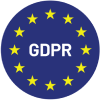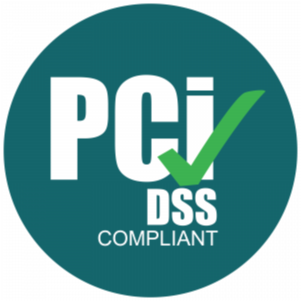Quick Summary
- Traditional CX surveys are reactive and slow, leading to missed insights, low response rates, and impersonal interactions.
- A proactive CX strategy anticipates customer needs using real-time feedback, predictive analytics, and fast, personalized follow-up.
- Sogolytics’ VoC Engine enables always-on listening, text and sentiment analysis, and seamless integration with CRM systems.
- Proactive CX improves key metrics like NPS, CSAT, CLTV, and churn by empowering businesses to act before issues escalate.
A proactive CX approach is critical to anticipate potential problems and address possible concerns before they occur, in turn reducing churn and improving customer satisfaction. In this piece, we’ll explore the limitations of reactive CX, define the basics of a proactive approach, and explore how your business can implement proactive practices to elevate your CX game.
Customers want brands to listen. According to a Ruder Finn survey, 93% of customers believe brands should listen to public opinion, and 57% of consumers actively engage with brands to share their perspectives.
As noted by PWC data, however, these interactions often miss the mark, with 59% of consumers saying that brands have lost touch with the human element of their customer service experience. In part, this issue is tied to reactive CX modeling. Rather than getting ahead of customer concerns and exploring ways to meet their needs, brands are using reactive processes to inform forward-looking strategies.
The result is exactly what you’d expect: Customers don’t feel heard or understood. The Sogolytics voice of the customer (VoC) engine offers a different approach, one that lets you connect with customers in real-time, react to concerns ASAP, and build a CX strategy that delivers a customer-first experience.
The Limitations of Traditional CX Surveys
Traditional CX surveys are familiar, but flawed. This is because they only capture customer data after issues have occurred. The longer it takes companies to ask for, interpret, and act on feedback, the less effective these surveys become.
Consider a post-purchase product survey. Even if this survey arrives in customers’ inboxes the day after they make a purchase, there’s little chance buyers will take the time to complete and return the survey immediately. It may sit unopened for days or weeks, or it may take several rounds of emails to finally get a reply. Multiply this by 1,000, 10,000, or 100,000 customers, and the lack of immediate data becomes a significant stumbling block.
In practice, traditional CX surveys come with three common limitations:
Action After the Fact
Reactive CX means any action happens after problems occur, and the longer this action takes, the more frustrated customers become.
Low Response Rates
Traditional surveys have low response rates. This makes it difficult to define and map large-scale customer trends or pinpoint specific consumer issues.
Impersonal Interactions
Post-purchase surveys are often limited in scale and generic in scope. This means your team is missing content and context – both critical for any effective action.
What is a Proactive CX Strategy?
A proactive CX strategy focuses on anticipating customers’ needs to provide personalized service and resolving problems before they occur. Sound impossible? With the right approach backed by the right technology, it’s achievable for any brand.
Proactive CX has three core principles: Listen, analyze, and act.
Listen
You can’t hear the voice of the customer if you’re not listening. In practice, listening is a two-part process. First, you need to be in the right place at the right time to hear what customers are saying. For example, if customers prefer to send feedback via email, but you have no one actively monitoring your customer service addresses, you’re missing critical data.
Second, you need to clearly define how you’ll use customer data, and ensure this data remains secure. As noted by CX Dive, just 50% of consumers have trust in brands. What’s more, the customers who are most likely to prefer a multi-touchpoint journey – Gen Z – are also the least likely to trust brands, coming in at just 28% compared to Baby Boomers’ 57%.
Analyze
Analysis comes next – understanding what customers want by diving into feedback data.
For analysis to be effective, however, it can’t just happen after the fact – it has to happen before events occur. Here’s an example: You have a set of 100 customer surveys that show issues with a specific product feature. Equipped with this data, you can improve the product and boost satisfaction.
The challenge? Even as you’re making changes, customer issues continue. This creates a gap between initial problems and business solutions, in turn leading to decreased satisfaction. Predictive analytics can help close the distance. Consider the example above. Instead of waiting for data to roll in, predictive analytics tools combine historic and current information to identify likely outcomes.
With just a handful of negative reviews, analytics tools can start searching for patterns and exploring historical links. This lets companies act immediately to improve the customer experience.
Act
Action is the final step in a proactive CX process. While listening identifies issues and analysis helps predict new problems, action improves customer satisfaction.
The key to success? Meaningful action that addresses specific pain points. If customers are reporting product issues, companies need to both solve these issues and communicate their next steps. This means creating targeted responses that speak directly to concerns. In practice, this might look like a personalized email that addresses the customer by name, incorporates their purchase history, and provides a clear indication of what comes next, such as a discount on their next purchase or a replacement product.
Proactive CX offers three key benefits:
Early issue detection
Listening lets you pinpoint problems as they occur, or even before they happen. This gives teams more time to respond with effective action.
Improved retention
If customers feel heard and understood, they’re more likely to come back – even if their initial experience was less than ideal. Consider a product that didn’t live up to expectations. Customer feedback that is met with immediate response and resolution can turn negative experiences into positive encounters.
Increased brand trust
As noted above, brand trust is on a downturn. To build back trust, businesses need to listen, understand, and act. A proactive CX platform like SogoCX provides the framework for brands to connect with customers in a meaningful way.
Inside the Sogolytics VoC Engine: Core Features and Capabilities
The Sogolytics VoC engine provides a solid foundation for proactive CX. Core features include:
Always-on Feedback
With the Sogolytics VoC engine, you’re always connected. Equipped with multiple feedback channels, you can learn more about your customers’ satisfaction levels, expectations, and sentiment about your brand.
Consider a customer who has just made a purchase. SogoCX delivers an automated SMS invitation to a customized and fully-branded survey. Once they respond, your client success team gets instant feedback. If customers report service or product issues, teams are provided all relevant data to follow up, including customer emails, ticket numbers, and specific concerns.
Text and Sentiment Analysis
What customers say (or write) isn’t always what they mean.
Consider a fictional customer review:
“I loved the fact that I paid a premium price for a product that failed in the first week. Really enjoyed that something I looked forward to didn’t live up to the hype.”
While this review uses many positive words that might trip up an automation, after a quick look at subtext, it’s clear that the customer is unhappy. Sogolytics offers in-depth text analysis with advanced natural language processing (NLP). This allows your team to efficiently analyze customer sentiment trends, pinpoint critical feedback, and take immediate action.
Integration with Other Tools and Platforms
The Sogolytics VoC engine easily integrates with other tools and platforms, such as CRM systems, to help streamline CX processes. For example, by using purchase and service data from CRM tools and combining this with Sogolytics touchpoint analysis, your teams are better equipped to identify potential issues and create proactive solutions.
Implementing Proactive CX Using Sogolytics
With Sogolytics, your teams are better equipped to create and manage proactive CX strategies. A three-step implementation plan can help streamline this process:
Step 1: Plan your proactive VoC roadmap
Before deploying new technologies and tracking customer sentiment, start by building a proactive VoC roadmap. Identify current shortfalls, pinpoint key metrics, and create a CX strategy.
Step 2: Set up touchpoint monitoring and closed-loop feedback
Next is setting up your touchpoint monitoring across all relevant customer channels. Here, the key is to ensure you’re meeting customers where they are – not where you want them to be.
Closed-loop feedback is also critical.
Step 3: Align teams across marketing, support, and product
Finally, loop in your marketing, support, and product teams as soon as possible. Let them explore how the VoC solutions work, see what they can do, and discover where it benefits their day-to-day operations. The more comfortable your teams are with the Sogolytics engine, the better.
Business Impact: Real Results with Proactive Frameworks
Metrics matter for business impact. This can be challenging in CX, since the customer experience is inherently qualitative.
Improved understanding of customer behavior paired with enhanced CX tool sets, however, has helped identify key metrics, including:
Reduced churn
Customer churn is a measure of how many buyers leave your brand during a set period. For example, if you have 1,000 customers and 100 leave in a month, your churn is 10%. Lower churn means more revenue – proactive CX helps identify and eliminate potential sources of churn.
When Developing Potential integrated SogoCX into their strategy, they gained a feedback management solution that had greater capabilities to share with their clients. Features like customized survey design, advanced question types to gain a better understanding of client needs, and omnichannel distribution methods to get personalized interactions gave Developing Potential more opportunities to create stronger relationships and lower customer churn.
Improved NPS and CSAT
NPS is a measure of how many customers are “promoters” – defined by a score of 8 or above on a scale of 10. CSAT is a percentage-based measure of how many customers are satisfied with or very satisfied with interactions or experiences, and is typically expressed as a percentage.
Proactive CX encourages more customers to become promoters because their issues are addressed ASAP, and boosts CSAT scores because teams learn what makes a successful interaction.
All In Credit Union was able to increase their NPS by 20 points by collecting, analyzing and acting on member feedback. The credit union boosted their average Net Promoter Score by 33% by learning from their SogoCX results about simple strategies, like offering coffee to members, which led to big impact.
Increased CLTV
Customer lifetime value (CLTV) is a measure of how much an average customer spends over their entire relationship (lifetime) with your brand. Better CX means less churn, which increases the amount customers spend over time.
Using Sogolytics, Image Tours significantly increased both the quantity and quality of customer feedback, reaching response rates close to 80%. This richer insight helps them better understand client preferences and drive repeat bookings, ultimately increasing customer lifetime value.
Enhanced time-to-resolution
The longer it takes your teams to respond to customer issues, the greater the chance of churn. Proactive CX lets you predict potential issues and take steps to reduce their impact, in turn minimizing your time-to-resolution.
Proactive CX approaches also help companies better monitor and manage feedback volume. For example, if teams track a rapid uptick in feedback volumes, they can analyze this feedback for common issues that require resolution.
By using Sogolytics to manage and revise surveys in-house, AUCH (the Association for Utah Community Health), cut their average turnaround time from six weeks to just one. Report creation was 90% faster with an increase in efficiency that enabled them to respond quicker to evolving healthcare needs and deliver insights more immediately to leadership.
Go Beyond Surveys with Proactive CX Strategy
Surveys are a solid starting point to understand customer sentiment and increase customer satisfaction.
But surveys can only take companies so far. With delayed feedback and low response rates, businesses often find themselves one (or more) steps behind customer preferences and emerging trends. In the best-case scenario, companies can address concerns before they lead to churn. In the worst case, brands lose trust and, in turn, see reduced revenues.
Taking a proactive approach to customer experience helps companies put the customer first. By meeting consumers where they are – on any touchpoint, at any time – businesses are better equipped to understand what customers want and create experiences that keep them coming back.
Proactive CX is the future: Start now with Sogolytics. Let’s talk.
FAQs
What makes a CX strategy proactive rather than reactive?
Proactive CX strategies focus on taking action before problems happen, instead of after customers take their business elsewhere. Proactive strategies include real-time data analysis, trend mapping, and personalized customer interactions.
How does the Sogolytics VoC engine collect data across customer journeys?
The Sogolytics VoC engine collects data across all touchpoints in the customer journey, then analyzes this data for key insights. In addition, the engine leverages NLP frameworks to help businesses better understand what customers are thinking – and what they really want.
Can Sogolytics integrate with our existing CRM system?
Yes. The solution is designed to integrate with existing CRM solutions to help provide comprehensive insights and feedback.
What metrics improve with a proactive CX approach?
With a proactive CX approach, companies can improve metrics such as NPS and time-to-resolution. They can also decrease customer churn and boost consumer trust.
Is proactive CX suitable for small to mid-sized businesses?
Yes. Any business can benefit from proactive CX. With the Sogolytics VoC engine, proactive CX is now possible for businesses of any size.












